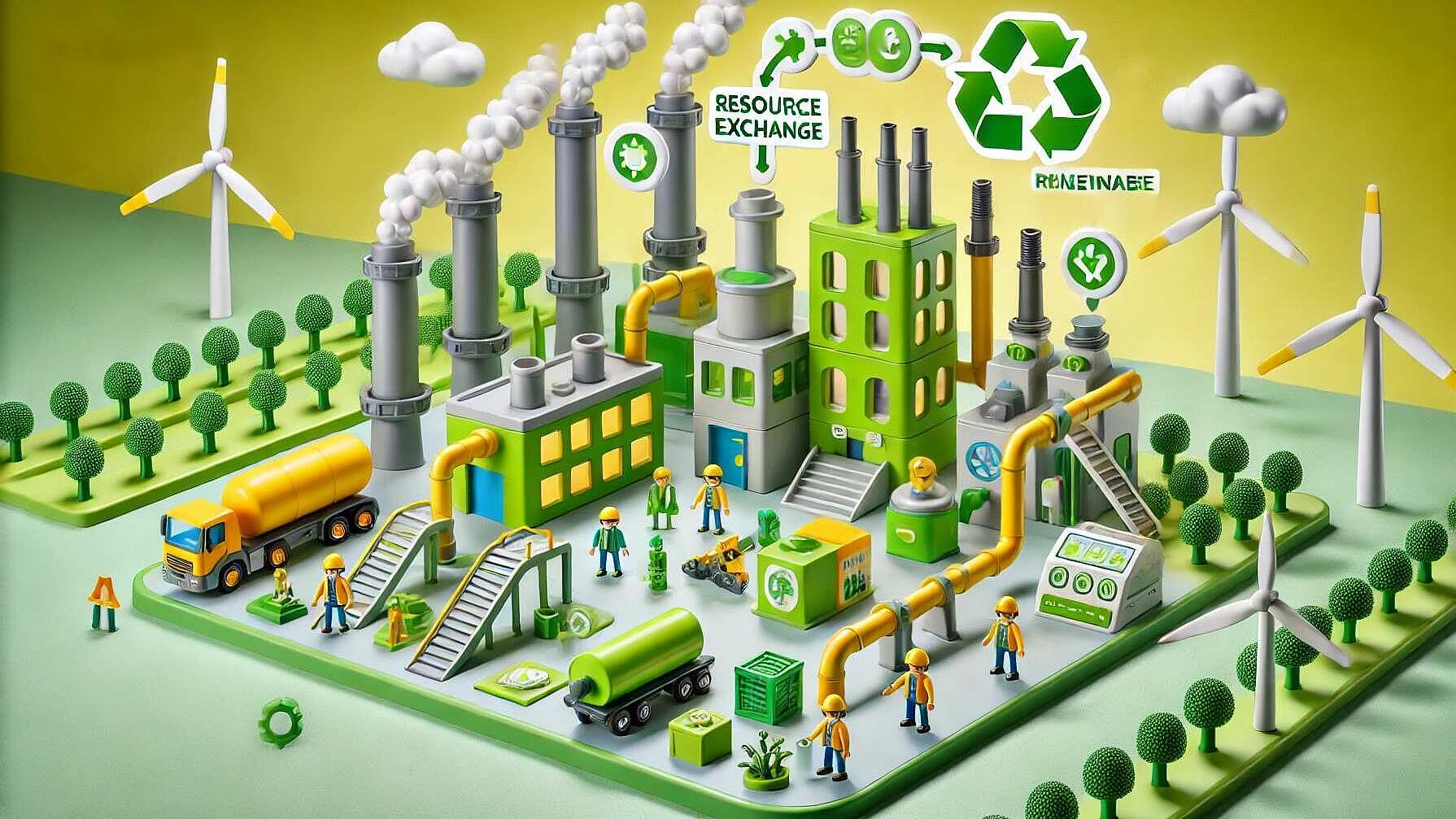 Circular Economy
Circular EconomyIndustrial Symbiosis And How To Engage Stakeholders
Summary
The paper discusses the role of industrial symbiosis (IS) in promoting sustainable practices within the industry by facilitating the exchange of waste materials, energy, and by-products between companies. It details the European Union-funded CORALIS project's efforts to advance IS through stakeholder engagement and three case studies in Basauri, Spain; Linz, Austria; and Izmit, Turkey. Although IS offers environmental and economic benefits, it faces obstacles such as regulatory issues, information sharing gaps, and resistance to change from traditional practices. The CORALIS project employs a socio-technical analysis model, SAMBA, coupled with STEEP indicators to identify factors affecting IS implementation. Case studies demonstrate the importance of transparent communication, economic incentives, formal agreements, and stakeholder collaboration in overcoming barriers to IS adoption. The project highlights the need for strategic planning and financial support in establishing successful IS initiatives. Active engagement is crucial in building trust, enhancing collaboration, and fostering long-term commitments to IS, moving the industry towards a more circular and resilient future.
Open full article
Industrial Symbiosis And How To Engage Stakeholders
The following article is a summary of the report “Inventory of best practices from the CORALIS demonstrators" delivered by the EU project CORALIS. And it is also a training article for the Enerwhizz, which is a fast-paced quiz on energy transition, greentec and renewables. Answer 5 YES-No questions in 45 seconds to earn cash coins and win prices delivered to your office or home. No registration, just play!
Check: https://enerwhizz.app/
Industrial symbiosis (IS) is an emerging approach to sustainable industry that promotes resource efficiency and circular economy practices by encouraging industries to exchange waste materials, energy, and by-products. The European Union-funded CORALIS project is at the forefront of this transformation, demonstrating how stakeholder engagement is essential in fostering successful industrial symbiosis initiatives. Through three key case studies—Basauri in Spain, Linz in Austria, and Izmit in Turkey—the CORALIS project showcases best practices in participatory processes for IS implementation.
The Current Landscape of Industrial Symbiosis
Industrial symbiosis is gaining momentum as industries seek ways to reduce waste, lower costs, and enhance sustainability. By collaborating and sharing resources, businesses can create closed-loop systems where waste from one company becomes a resource for another. This not only minimizes environmental impact but also drives economic growth.
Despite its advantages, IS faces multiple challenges, including regulatory constraints, lack of information sharing, and reluctance among businesses to change their traditional practices. The CORALIS project seeks to address these barriers by emphasizing stakeholder engagement and participatory processes, ensuring a collective approach to IS adoption.
Innovations and Opportunities in Stakeholder Engagement
CORALIS employs a socio-technical analysis model called SAMBA (Socio- and Multicriteria Model for Reducing Barriers Analysis) to assess IS viability. This model integrates stakeholder analysis with STEEP (Social, Technological, Economic, Environmental, and Political) indicators to gain a comprehensive understanding of the factors influencing IS adoption.
Case Study 1: Basauri, Spain
The industrial partner in Basauri, Sidenor Aceros Especiales Europa SL, a steel manufacturer, collaborated with CIRCE Foundation to explore waste heat recovery opportunities. With growing concerns about energy dependency and sustainability, Basauri saw strong external support for IS. However, a need for greater stakeholder involvement and clearer cooperation frameworks emerged as key challenges. The case study underscored the importance of transparent communication and commitment from all parties to drive IS initiatives forward.
Case Study 2: Linz, Austria
The Linz case study highlighted the environmental and economic benefits of IS. Stakeholders emphasized that emissions reductions and sustainability were major motivators for participation. However, economic incentives were equally crucial. The study found that stakeholders were more likely to engage when they could see clear economic benefits. Therefore, formal agreements and contracts were recommended to ensure sustained commitment and progress.
Case Study 3: Izmit, Turkey
In Izmit, cooperation between industrial and research partners played a significant role in advancing IS. The CORALIS initiative facilitated network expansion, leading to unexpected collaborations. The study revealed that consistent engagement and knowledge exchange are critical for long-term success. Despite the need for high initial investments, stakeholders recognized the long-term benefits of IS, reinforcing the necessity of strategic planning and financial support.
The Impact of Engagement on Industrial Symbiosis
The CORALIS project demonstrates that active stakeholder engagement is fundamental to overcoming IS barriers. The participatory approach helps in:
- Enhancing Collaboration – Stakeholder engagement fosters partnerships between industries, governments, and research institutions, allowing for shared knowledge and expertise.
- Building Trust and Transparency – Open communication and regular updates create a sense of trust, which is essential for cooperation.
- Identifying and Overcoming Barriers – Through continuous dialogue, stakeholders can address regulatory, technical, and economic challenges proactively.
- Encouraging Long-Term Commitment – Formal agreements and participatory decision-making processes increase stakeholder accountability and commitment.
Conclusion
The CORALIS project underscores that industrial symbiosis is not just a technical challenge but a social and economic opportunity that requires stakeholder collaboration. The lessons learned from Basauri, Linz, and Izmit highlight the power of engagement in achieving sustainable industry goals. By fostering partnerships, encouraging transparency, and addressing challenges collectively, the industry can move toward a more circular and resilient future.
If you read the full article, you are perfectly equipped to play and win. And to have fun with friends leagues, leaderboards, missions and whizzers. And likely in your language as we are supporting 12 languages.
And if you found nuggets you want to have a deeper look at – check the source document, the report “Engagement activities in the CORALIS follower cases to promote participatory processes in the definition of each IS follower case" delivered by the EU project CORALIS.



